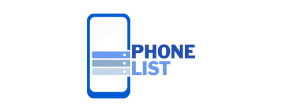Landing pages are critical in converting visitors into leads and customers. However, a poorly designed landing page can drive potential clients away, costing your business valuable opportunities. In this article, we’ll explore how to identify issues with your landing page design and offer practical solutions to fix these problems, ultimately overseas data boosting your lead generation and improving overall business performance.
Why Good Landing Page Design Matters
Your landing page is often the first impression visitors have of your brand. It needs to be clear, compelling, and focused on a single goal—converting visitors into leads. When your design is cluttered, confusing, or slow to load, users quickly lose interest. According to studies, 38% of users stop engaging with a website if the content or layout is unattractive. This means poor design directly affects your conversion rates.
Common Problems in Poor Landing Page Design
Lack of Clear Call-to-Action (CTA)
One of the biggest mistakes in landing page design is not having a strong and obvious call-to-action. If visitors can’t easily find what to do next—whether it’s filling out a form, signing up for a newsletter, or making a purchase—they’ll leave without converting.
Overwhelming Information
Too much text or too many images can overwhelm visitors, making it difficult for them to focus on the key message. A cluttered page dilutes your offer and reduces the chance that users will take action.
How to Fix Your Landing Page for Better Leads
Simplify Your Design and Focus on One Goal
A clean, simple design helps visitors understand what you want them to do. Remove unnecessary elements and distractions. Keep the headline, subheadline, and CTA clear and prominent. Use whitespace strategically to give the content applying data storytelling in lead generation room to breathe and guide the visitor’s eye toward the action.
Make Your CTA Clear and Compelling
Your call-to-action should be a bright, attention-grabbing button with concise, action-oriented text like “Get Your Free Trial,” “Download Now,” or “Subscribe Today.” Position your CTA above the fold and repeat it if your page is long, so visitors don’t have to scroll to find it.
Use High-Quality, Relevant Images
Visuals can enhance your message, but only if they support your goal. Use images that resonate with your target audience and relate directly to your offer. Avoid generic stock photos that can feel disconnected from your brand and message.
Optimize Page Speed and Mobile Experience
A slow-loading page or poor mobile design can drastically reduce conversions. Use tools like Google PageSpeed Insights to identify and fix loading caseno data issues. Ensure your landing page is fully responsive, with easy-to-tap buttons and readable fonts on mobile devices.
Test and Improve Continuously
The best landing pages are the result of ongoing testing and optimization. Use A/B testing to experiment with headlines, CTAs, colors, and images to find what works best. Track metrics like bounce rate, time on page, and conversion rate to measure your improvements and make data-driven decisions.
Conclusion
Fixing poor landing page design is crucial for generating better leads and growing your business. Focus on simplicity, clear messaging, and a strong call-to-action to create an effective landing page that converts. Regular testing and optimization will help you continually improve your results, turning visitors into loyal customers. By prioritizing these design principles, you can unlock the full potential of your landing pages and significantly boost your lead generation efforts.

